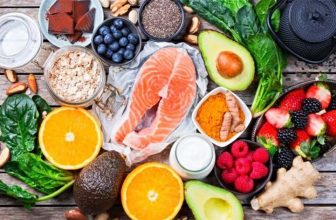
Government guidelines recommend 30g of fibre per day to sustain a healthy, balanced diet, however evidence shows that the average adult consumes less than 20g daily. Our previous articles; Top 5 Super Cheap High-Fibre Vegetables and Top 5 Health Benefits of Dietary Fibre, discussed the importance of fibre in reducing your risk of heart disease, diabetes and some cancers, as well as having an important function in regulating body weight. It naturally follows that we should be making a more conscious effort to bump up our fibre intakes. Here’s where a vegan diet can be extremely beneficial. Read on to discover more in Vegan Food & Fibre: 3 Things You Must Know!
1. What is Fibre?
Fibre exists as the non-digestible component of plant foods. The body cannot digest it, so it passes through the digestive tract largely unchanged. Vegans consume the highest quantity of plant foods, resulting in a diet much higher in fibre.
Take, for example, a 100g piece of steak containing 0 grams of fibre, and compare that to 100g of legumes containing 8 grams of fibre – it’s a no brainer that vegans are much more likely to reach the recommended daily intakes, compared to meat eaters.
2. What Happens if You Eat too Much Fibre?
If you’ve always been a meat eater, and suddenly switch to a vegan diet, the transition might be accompanied by some unwanted side effects. A dramatic increase in fibre can lead to abdominal bloating, flatulence, diarrhoea or even constipation. However, the good news is that there are ways to avoid these side effects, whilst still upping your fibre intake.
3. How Do You Get Your Recommended Daily Fibre Intake?
All fruits, vegetables, legumes and beans contain fibre, so it’s important to consume these regularly throughout the day. To prevent any gastrointestinal upsets alongside this, make sure you also drink plenty of fluids. Increasing your level of physical activity can also help the digestive system run smoothly, so try a gentle walk before or after a fibre rich meal.
Additionally, if the concept of only eating plant foods is very new to you, don’t rush into eating heaps of fibre-rich foods right at the beginning. It might be best to take a multi-step process, where you gradually progress from a meat eater, to a vegetarian and then finally a vegan. This will allow your body to adjust slowly to the dietary changes.









